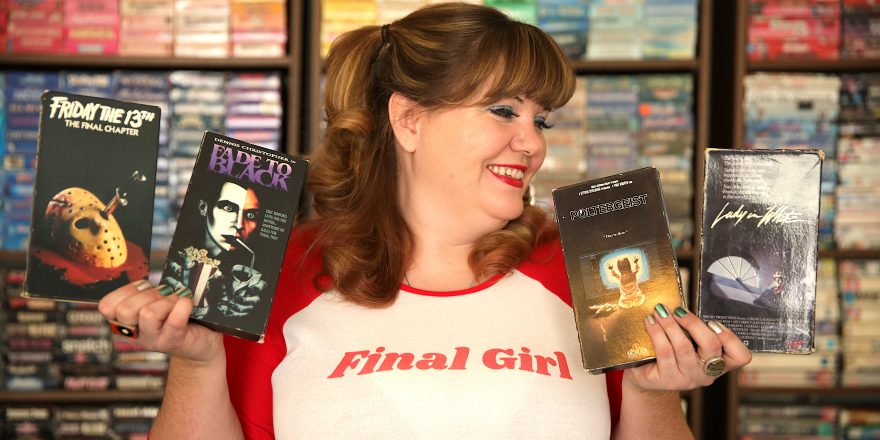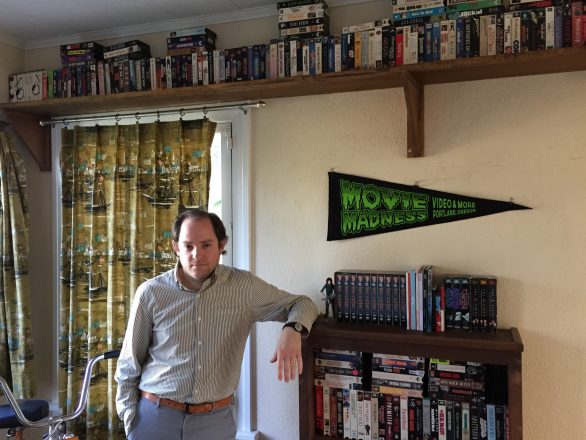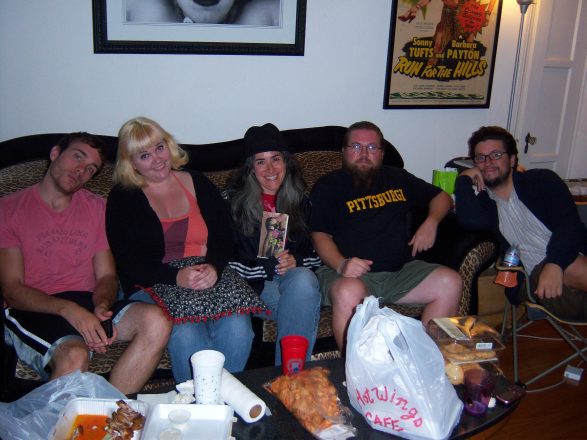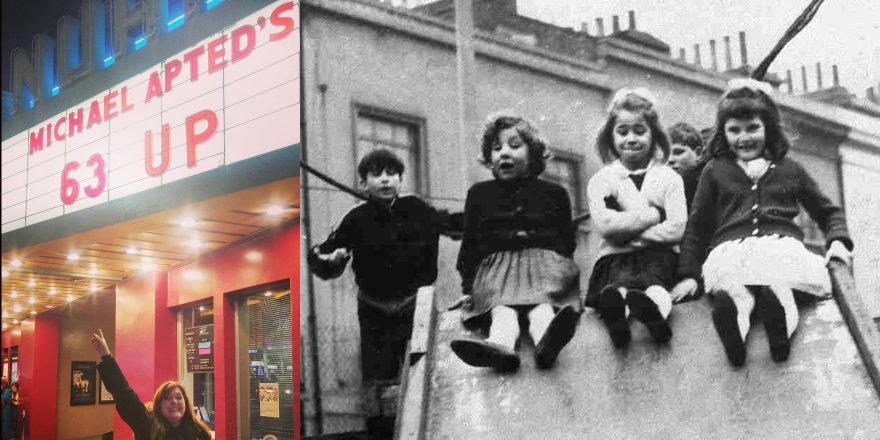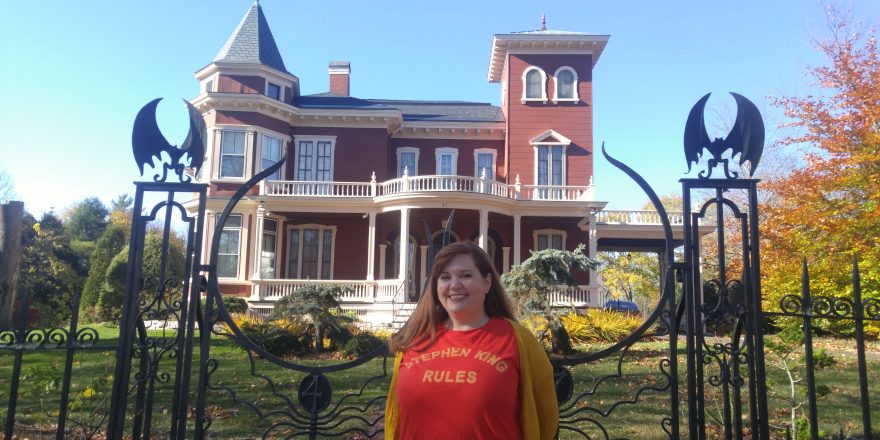The first VHS I ever owned was Who Framed Roger Rabbit, bought for me for Christmas the year it came out – 1988 – and it still plays perfectly. That is what I love about VHS – you could have paused a tape in 1993, and when you come back to it now, it’s held your place for you! You can pick up exactly where you left off.
I quickly began collecting as many VHS tapes as I could afford to when I was younger – they were pretty pricey then – but I fell in love with them because they gave me the ability to watch a movie as many times as I wanted to. Every time I watched it, I would find a new detail, a subtlety in a performance I hadn’t noticed before, a tiny bit of background information that I had missed. I adored it, and watched movies obsessively, sometimes to alarming levels. Among my very first VHS compulsions were Pet Sematary, Terminator 2: Judgment Day, Hellraiser, Nightmare on Elm Street, A Hard Day’s Night and Help! Getting to pop a favorite movie in and show it to someone who had never seen it before was the best, but even on my own, the comfort of a film I love at my command has always been a delicacy.
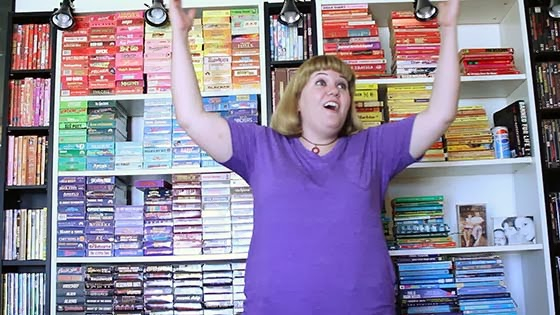
My very first job was at a video store in Las Vegas called Video Tyme, the summer before I left for college. Getting to rent whatever I wanted for free and getting led down different film rabbit holes of recommendations from co-workers and customers made the job a delight. I tried to soak it all in – not the boring new release wall, but the foreign, cult, horror, weird sections. And I loved suggesting movies to people – I must have gotten hundreds of people to rent Say Anything that summer and every single one came back satisfied. Being able to share the joy that the film gave me with a stranger felt special.
I felt at home in a video store. And that’s why my home still is, in some ways, a video store.
My VHS collection grew slowly in college – I was the girl with the drawer full of tapes that anyone in the dorm could borrow. My best friend, Marion Kerr, and I watched every movie in the horror section of our local video store in Irvine our senior year and became so familiar with the shop and its patient owner. Gold Star Video became our mecca that year and gave us an education beyond our wildest dreams. (We started a podcast about this project: Horror Movie Survival Guide!)
About the time I graduated and moved to Los Angeles in 2001, video stores were starting to decline, which made me so very sad. They were so very important to the film education of thousands of other cinephiles. Even those living in rural areas could rent VHS tapes at their local shops. Ask any director or film lover of a certain age and they will tell you video stores changed everything, giving anyone the chance to see a movie at their leisure, for not a lot of money, in their own home.
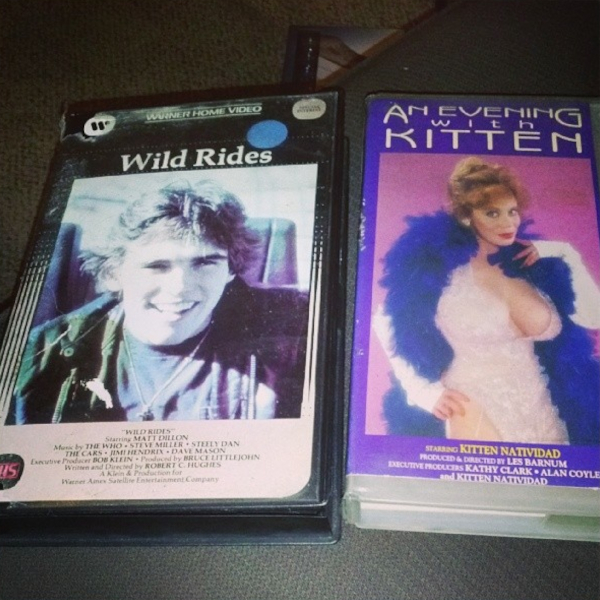
Now, I made a documentary about the importance of seeing films in a theater with an audience, and to see them on the best format possible – 35 mm preferably – and I stand by that sentiment wholeheartedly. However, to see a film in any format is better than not seeing the film at all, and for many, VHS was the only way to find new cinema.
I understand VHS is not the best way to watch a film, if we look at it from a strictly cinematic point of view, or in terms of aspect ratio and clarity. But there’s also something to be said for not seeing everything perfectly, and for the specific aesthetic that video gave to films.
A silver lining to these stores closing was that many of them sold their videos, and I was able to snap up hundreds of tapes, often for a dollar or two each, knowing they would be coming to a loving home. That gave me the freedom to explore with my purchasing – finding films I had never heard of, but which sounded interesting, and getting to buy them for only a small amount of money, instead of what I had originally been paying for tapes in the late ’80s and early ’90s.
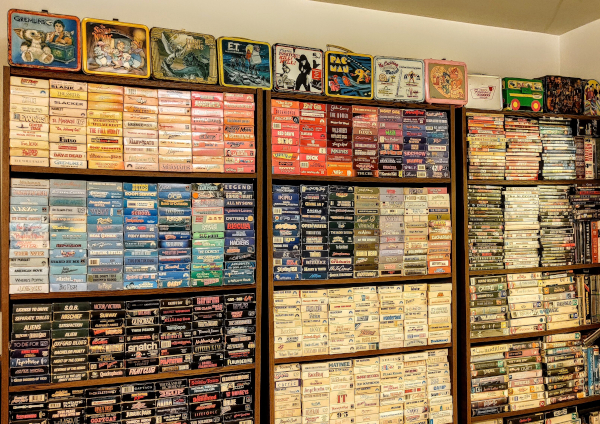
My collection and mania grew, and soon I was known for being a VHS hound, and my color-coordinated collection was even featured in the 2013 documentary Rewind This! (My burgeoning collection is featured on the back cover of the disc!) Apparently, the rainbow wall was a hit when the film screened in Japan!
My collection always looked a bit slapdash and messy, but color coordination is so aesthetically pleasing to me and I can remember every film by its box color, so there is no problem on that front. The only downside is each time I get a new tape, I have to shift every cassette down by one.
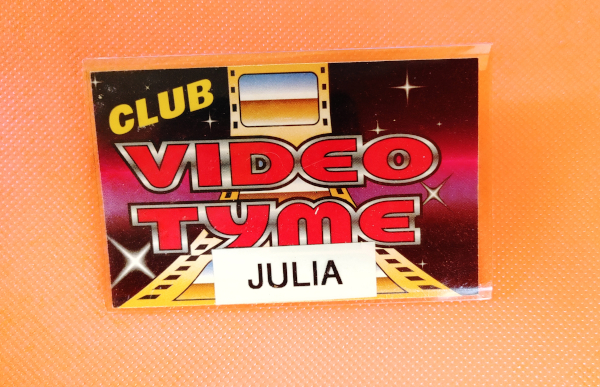
I love my collection and the joy it brings just to look at it every day. I love my Star Wars box set (pre-Lucas retouching), my much-worn bootlegs of Heavy Metal Parking Lot and The Star Wars Holiday Special (as they were meant to be seen, and always acquired through much secrecy from the pirating kings of all VHS nerds). I have so many I adore, with so many fantastic backstories.
To be able to still play the tapes from my childhood – those very cassettes – makes me so happy. That’s what’s missing in the digital age: the ability to physically touch an object I used to touch and handle at 12 years old. That very nostalgia has been fueling the resurgence of VHS – so many indie companies are now running off-brand new video cassettes of their films, and they’re selling well. I’ve bought many myself! (And my post sound designer, knowing how much VHS means to me, made me a one-of-a-kind VHS of my Stephen King short film I Know What You Need to add to my collection – so sweet!)
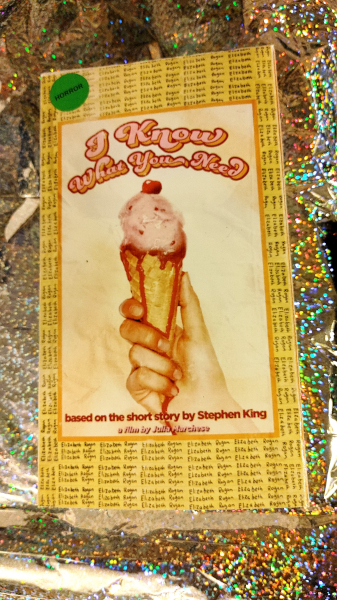
Close your eyes. Can you feel the weight of the VHS tape in your hand? How it feels to slip off the cover (or open the case)? Now put it in the VCR and listen to it settle into its place inside. Can you hear the production company’s fanfare? Or a voice telling you about the coming attractions? What about the whir of the tape rewinding after, the pitch getting higher as the tape races towards its goal?
Those memories are called up clearly and are tangible for a reason – because people crave objects they can remember, touch, smell, hear, hold in their hand.
I know I do.
Featured image of Julia Marchese by Nat McFee; all images courtesy Julia Marchese.



